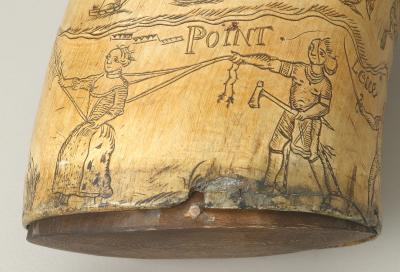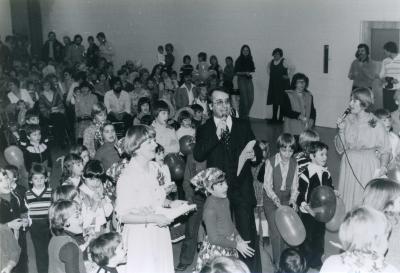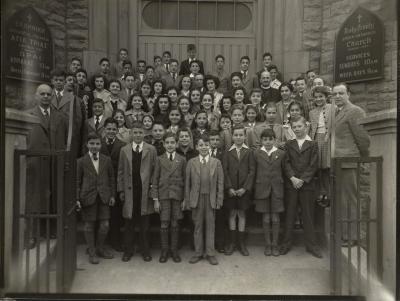Following the 1973 coup d’état came a large wave of immigration from Chile to Montréal, as Chileans joined what had been up until then a small community.
In 2011, the Montréal census metropolitan area was home to 10,730 people of Chilean origin. Numbers—much smaller before the coup d’état in September 1973—swelled as thousands of Chileans turned to Canada and Montréal in the years after Agosto Pinochet seized power.
Immigration under dictatorship
Chiliens - avant le départ
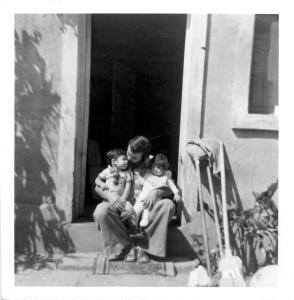
As of 1974, hundreds of Chileans arrived in Canada thanks to a program developed to speed up the immigration process for Chilean applicants. In place until 1978, the program provided approved applicants with a loan for their plane ticket and financial aid upon arrival. Nearly 600 Chilean immigrants settled in Québec annually from 1974 to 1978, during the height of Pinochet’s rule, mainly to the Montréal area. They may have chosen to come to Québec or were encouraged to choose it as a new home. During this time, many Chileans were fleeing persecution because of opposing left-wing views, or due to the financial instability in Chile during the dictatorship and the spiking unemployment rate, among other reasons.
Immigration in the years to follow
Chiliens - Raimundo Ravello

From 1979 to 1989, Chilean immigrants continued to settle in Montréal. Though annual numbers dwindled, Québec still welcomed 3,379 Chilean immigrants during this period, mainly to the Montréal area. In 1979, a visa was required to stay in Québec, which no doubt contributed to fewer immigrants arriving. While the situation remained tense in Chile, the dictatorship had written a new constitution and became recognized as a legitimate government, making it difficult for Chilean asylum seekers to meet the federal government’s criteria. Chileans who settled in Montréal during this period did not all arrive directly from their home country. Many of them first travelled to other Latin American countries, such as Argentina. After the dictatorship ended in 1990, Chileans continued to immigrate to Montréal. Between 1990 and 2007, 4,738 Chileans came to Québec and settled in the Montréal area, often for economic reasons or to join family or friends. Those who arrived in Montréal during this time were able to integrate into an already well-established Chilean community.
Most Chilean immigrants chose to settle in predominantly French-speaking neighbourhoods, first primarily in Montréal, but later in the suburbs north and south of the city as well. Already in the 1970s, many Chilean Montrealers became actively involved in civic and cultural activities in the city, as part of political parties, unions, and community organizations. In terms of economics, many Chileans had difficulty having their skills recognized, even though they were on average more educated than people born in Québec.
Raimundo Ravello’s story
Chiliens - Raimundo Ravello
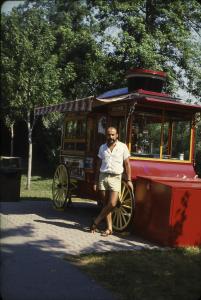
Raimundo Ravello came to Québec in the 1970s along with so many of his compatriots. The MEM met with him in January 2017 in Longueuil to hear his story.
Originally an engineer, Raimundo was working for Citroën in Chile when the coup d’état occurred. He lost his job shortly after because of his known support for the left. He was imprisoned for two days by the military police because of his political opinions, after which time it was difficult for him to hold down a job under the dictatorship. Shortly after the coup d’état, Raimundo’s sister left Chile for Argentina, immigrating to Canada around 1975 and settling in Longueuil. No longer feeling safe in Chile, Raimundo and his family also dreamed of leaving.
Raimundo applied to the Consulate of Venezuela and the Canadian Embassy. He received a positive response from both, but decided to leave for Canada. Even though he had been offered an Ontario-based job in the automobile industry, he chose to come to Québec. He arrived in June 1977, fifteen days before the rest of his family, and stayed with his sister. After securing a job and a car, he settled with his family in Longueuil and began taking French classes with his wife.
Chiliens - famille Ravello
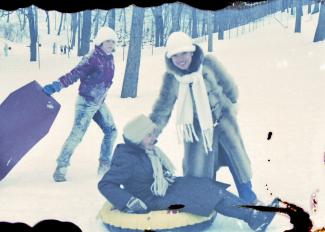
With his background in mechanical engineering, Raimundo was able to find a job as a machinist in Montréal. Shortly after, he began working for a company in Longueuil, where he has worked ever since, beginning as a clerk and gradually working his way up the ladder. Over the years, he learned French, and took professional development at CEGEP and administration classes at Université de Sherbrooke.
Raimundo became friends with a colleague who had travelled to Cuba in the days of Fidel Castro and he felt compelled by René Levesque’s call for independence. The movement echoed much of his own political convictions back home. “I stepped into the whirlwind because it was what I knew,” says Raimundo. He also participated regularly in peñas—meetings between Chilean friends. “We’d get together on the weekends and talk about politics. Sometimes we would collect money to send to people back home who were really in a tight spot. We’d always wind up listening to music and dancing by the end of the night. Those nights did me a lot of good, those were good years.”
When he had arrived in Longueuil, Raimundo had a lot of trouble finding the Chilean products that he and his family usually cooked with. In Montréal, on Saint-Laurent and René-Levesque, he found a supermarket that sold European, African, and Haitian products. He would buy the Haitian bread that tasted much like Chilean bread and reminded him of home.
enfants Ravello
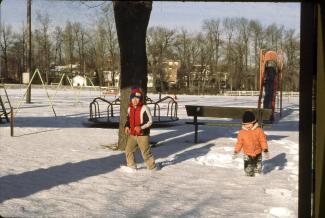
L'arc
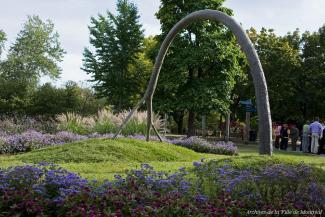
On September 11, 2009, the City of Montréal unveiled a sculpture by Michel de Broin in Parc Jean Drapeau, on l’île Notre-Dame. The work of public art was created in memory of former Chilean president Salvador Allende, who was overthrown by Pinochet. Many Chilean Montrealers gathered at the site for the sculpture’s inauguration.
The sculpture is of a tree that has become rooted at each extremity and bent into an arch, evoking the importance of transmission. During his very last speech on September 11, 1973, on Radio Magallanes, President Allende said: “...the seeds we have planted in the noble consciousness of thousands of Chileans can never be prevented from bearing fruit. Our enemies are strong; they can enslave the people. But neither criminal acts nor force of arms can hold back this process. History belongs to us...
ART PUBLIC MONTRÉAL. « L’ARC, 2009 », [En ligne], Œuvre.
https://artpublicmontreal.ca/oeuvre/larc/
DEL POZO, José. Les Chiliens au Québec. Immigrants et réfugiés de 1955 à nos jours, Montréal, Boréal, 2009, 409 p.
DEL POZO, José. « Les Chiliens au Québec : une histoire de réfugiés et d’immigrants », Migrance, no 34, 2009, p. 135-147.
DEL POZO, José. « L’immigration des Latino-Américains. Une histoire de réfugiés et d’immigrants », dans Histoire d’immigrations au Québec, Québec, Presses de l’Université de Québec, 2014, p. 163-179.
GOUVERNEMENT DU QUÉBEC. MINISTÈRE DE L’IMMIGRATION ET DES COMMUNAUTÉS CULTURELLES. DIRECTION DE LA RECHERCHE ET DE L’ANALYSE PROSPECTIVE DU QUÉBEC. Portrait statistique de la population d’origine ethnique chilienne recensée au Québec en 2011, [En ligne], 2014.
http://www.quebecinterculturel.gouv.qc.ca/publications/fr/diversite-ethn...

